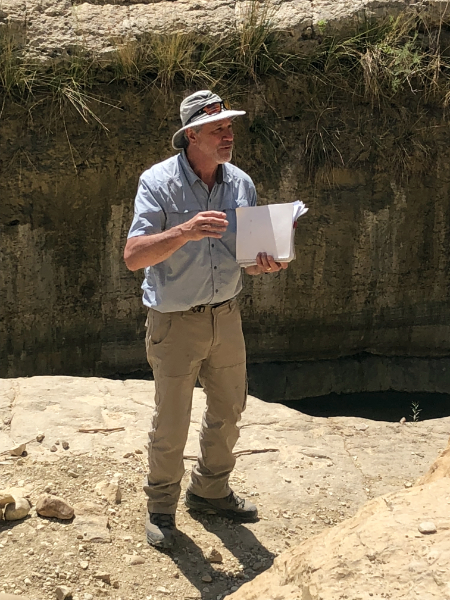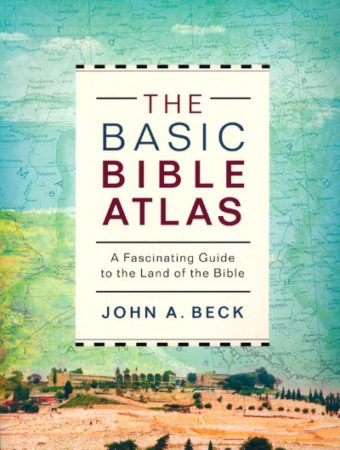A couple of months ago, I wrote about the importance of having and using a Bible atlas in your Bible study and travel (“Your Friend the Bible Atlas“). I noted that I was eagerly anticipating the release of a new resource by a favorite historical geography scholar of mine, Dr. Jack Beck, and that I would review the work when I had read it. The new work met expectations (and then some), and I’m adding it to my “must-have” recommendations for Bible study resources. It’s called The Basic Bible Atlas: A Fascinating Guide to the Land of the Bible.
The Basic Bible Atlas is a macro-level, big-picture resource that serves as both an excellent starting point for a beginner and a way for a more advanced student to emerge from the details and reconnect with the broader narrative. Beck first introduces the basic physical geography of the Holy Land and then tells the overarching story of the Bible in terms of its geographical settings such that the story itself becomes clearer and more meaningful.

Physical geography, of course, is more than presenting a map of places but includes topics such as the land’s topography, climate and rainfall, soil and agricultural productivity, and travel routes and seaports. In Part 1, Beck gives enough of this information to help the reader get started in understanding these features and why they are important, without providing encyclopedic diagrams and discussions that take up those subjects as disciplines in themselves. Everything that he includes directly serves the reader’s understanding of the story of salvation, and he presents it simply, compactly, and accessibly.
Part 2 is the majority of the book and contains one of the most coherent and helpful summaries of biblical history from beginning to end that I have encountered in any introductory resource. The story of what God is doing in the land and how an understanding of the Bible’s historical geography helps us to grasp that story are what drives this atlas. A great strength of Beck’s atlas is that the maps and geographical information never become detached from the biblical narrative. The maps and illustrations are beautifully presented and do not dizzy the reader with data that do not contribute to the task at hand. As he works his way along the historical timeline of the Bible’s story, Beck highlights not only where things happen but also why it matters and in certain cases whether they happen in the “right” or “wrong” places. For example, in 1 Samuel the location of the ark of the covenant helps us to see into Israel’s spiritual condition. When the ark is not where it should be, something is wrong, and we are supposed to take notice. Locale can signal something spiritual that connects us to the story of salvation that the Bible tells. This kind of interpretive help is one of the ways that this resource really shines.
The Basic Bible Atlas comes in at only 172 pages, including end notes and index, as well enough margin space to make your own notes. It is available in a paperback edition that is sturdy enough to take along and use on a trip to the Holy Land. The pages are not thin and wimpy, but made to last. At the same time, it is not the hulking overweight kind of volume that I usually associate with reference books in my field, including many atlases. As far as I know, there is nothing up-to-date that is like The Basic Bible Atlas. His solid interdisciplinary command of biblical studies, history, and geography is evident, and his content is current and reliable. Given its overall helpfulness, quality, and faithfulness to the story of salvation, this will be one of the essential resources that I recommend to my students, to Holy Land travelers, and to anyone ready to engage the Bible story seriously.
Publication details:
John A. Beck, The Basic Bible Atlas: A Fascinating Guide to the Land of the Bible (Baker Books, 2020), ISBN 978-0-8010-7790-6
(Note: I purchased my own copy of this resource at full price and do not receive anything in return for discussing it on the blog.)


